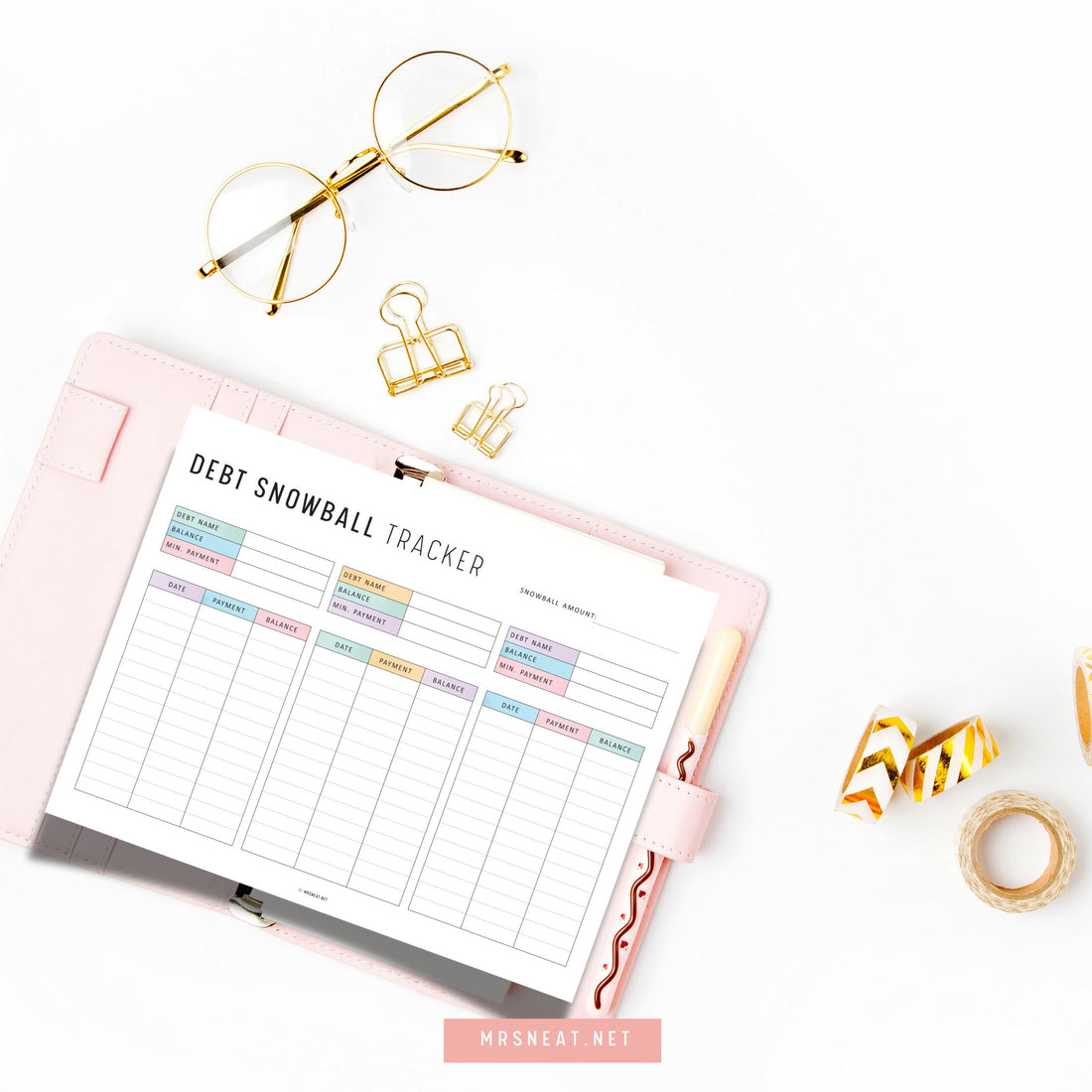
Achieve Debt-Free Living: How to Pay Off Student Debt Fast
maris wariShare
Student debt is a huge issue that many people face today. With the rising costs of education, more and more students are graduating with significant debt, which can feel overwhelming and daunting.
The student debt crisis affects millions, making it difficult for many to achieve financial freedom and pursue their dreams without the heavy burden of loan repayments hanging over their heads.
Paying off student debt quickly is important for several reasons. First and foremost, it can save you a considerable amount of money in interest payments over the life of your loans.
The sooner you pay off your debt, the less interest you'll accrue, and the faster you'll be able to allocate your hard-earned money toward other financial goals, such as buying a home, starting a business, or simply enjoying a debt-free lifestyle.
Additionally, eliminating student debt can significantly reduce financial stress, improve your credit score, and provide a greater sense of financial security.
The purpose of this guide is to provide you with practical tips and strategies to pay off your student debt as quickly as possible.
Whether you’re just starting your repayment journey or have been chipping away at your loans for a while, this guide is designed to offer helpful advice tailored to your situation.
From creating a repayment plan and increasing your income to cutting down on expenses and exploring loan forgiveness programs, we’ve got you covered.
By following these steps, you can take control of your financial future and achieve the debt-free life you’ve always dreamed of.
Assessing Your Debt Situation #1
Understanding Your Total Debt Amount
The first step in tackling your student debt is to get a clear picture of what you owe. It might sound a bit scary, but knowing your total debt amount is crucial. Gather all your loan statements and add up the amounts.
This will give you a complete understanding of the total debt you're dealing with. Having this number in front of you can be a motivating factor—it’s the starting point of your journey to becoming debt-free.
Reviewing Interest Rates and Loan Terms
Once you know your total debt, the next step is to review the interest rates and terms of each loan. Different loans may have different interest rates and repayment conditions, which can significantly affect your repayment strategy.
Higher interest rates mean you’ll pay more over time, so it's important to note which loans are costing you the most in interest.
Make a list of your loans, their interest rates, and any specific terms, such as repayment periods or grace periods. This detailed overview will help you make informed decisions about which loans to tackle first.
Identifying High-Priority Loans to Pay Off First
After reviewing your interest rates and terms, identify which loans should be your high-priority targets.
Typically, it's a good idea to focus on paying off high-interest loans first because they accumulate interest more quickly, costing you more money in the long run.
This strategy, known as the avalanche method, helps you save on interest payments. Alternatively, some people prefer the snowball method, where you pay off the smallest loans first to gain quick wins and build momentum.
Choose the method that suits your financial situation and personal motivation style best.
Creating a Repayment Plan #2
Setting Realistic Financial Goals
Creating a solid repayment plan begins with setting realistic financial goals. Take a moment to think about what you want to achieve and by when.
Maybe you want to be debt-free in five years or reduce your monthly payments to make room for other expenses.
Whatever your goals are, make sure they are specific, measurable, and attainable. Setting these goals will give you something concrete to work toward and help keep you motivated along the way.
Developing a Budget to Prioritize Debt Repayment
Once you have your goals in place, the next step is developing a budget. A budget is your best friend when it comes to paying off debt.
Start by listing your income and all your expenses, including essentials like rent, groceries, and utilities.
Then, see where you can cut back. Maybe you can dine out less or cancel subscriptions you rarely use. Use the money you save to prioritize your debt repayment.
By sticking to a budget, you'll ensure that you’re consistently putting as much money as possible toward your loans.
Exploring Different Repayment Plans
Not all repayment plans are created equal, so it’s worth exploring your options. The standard repayment plan spreads your payments over a fixed period, usually ten years.
However, if your monthly payments are too high, you might consider an income-driven repayment plan. These plans adjust your payments based on your income and family size, making them more manageable.
Some plans even offer loan forgiveness after a certain period. Research the options available for your loans and choose the one that best fits your financial situation.
Increasing Your Income #3
Side Hustles and Part-Time Jobs
Increasing your income can significantly speed up your debt repayment process. Consider picking up a side hustle or part-time job. This could be anything from delivering groceries to working in retail on weekends.
Even a few extra hours a week can add up and make a big difference. Plus, having an additional income stream provides more money to put directly toward your loans, helping you pay them off faster.
Freelancing Opportunities
Freelancing is another excellent way to boost your income. If you have a skill like writing, graphic design, or web development, there are plenty of freelance opportunities available online.
Websites like Upwork, Fiverr, and Freelancer connect you with clients looking for your skills. Freelancing allows you to work on your schedule and take on as much work as you can handle, making it a flexible way to earn extra cash.
Utilizing Your Skills for Extra Cash
Think about the skills you have and how you can use them to earn extra money. Are you good at tutoring?
Offer your services to students who need help with their studies. Do you have a knack for consulting?
Share your expertise with businesses or individuals who need guidance. Even hobbies like photography or crafting can turn into profitable side gigs.
By leveraging your skills, you can create additional income streams that contribute to your debt repayment goals.
By creating a realistic repayment plan and finding ways to increase your income, you can take significant steps toward paying off your student debt fast.
These strategies will not only help you manage your loans more effectively but also bring you closer to achieving debt-free living.
By understanding your total debt amount, reviewing your interest rates and loan terms, and identifying high-priority loans, you’re setting yourself up for success.
With a clear understanding of your debt situation, you can create a targeted repayment plan that will help you pay off your student loans faster and move closer to achieving debt-free living.
Cutting Down on Expenses #4
Minimizing Discretionary Spending
One of the quickest ways to free up money for student debt repayment is by minimizing discretionary spending. This includes non-essential expenses like dining out, entertainment, and impulse buys.
Start by tracking your spending to identify areas where you can cut back. Small changes, like cooking at home instead of eating out or opting for a movie night at home instead of going to the theater, can add up over time.
By being mindful of your spending habits, you can redirect more of your income toward paying off your loans.
Living Frugally and Making Cost-Effective Choices
Living frugally means making intentional choices to save money in your daily life. Look for cost-effective alternatives for the things you need.
This could mean shopping at discount stores, buying in bulk, or choosing generic brands over name brands. Additionally, consider second-hand options for items like clothing and furniture.
Frugal living isn't about depriving yourself but rather about making smarter choices that allow you to save money and pay down your debt faster.
Reducing Housing, Transportation, and Other Major Expenses
Major expenses like housing and transportation often take up a significant portion of your budget. Look for ways to reduce these costs.
If possible, consider downsizing to a smaller, more affordable living space or finding a roommate to share expenses.
For transportation, evaluate whether you can switch to a cheaper mode of travel, such as public transportation, biking, or carpooling.
Additionally, review your insurance policies and utility bills to see if you can negotiate lower rates or switch to more cost-effective providers.
By reducing these big-ticket expenses, you can free up substantial funds to allocate toward your debt repayment.
Exploring Loan Forgiveness and Assistance Programs #5
Understanding Federal Loan Forgiveness Programs
Federal loan forgiveness programs can significantly reduce the amount you owe. Programs like Public Service Loan Forgiveness (PSLF) are designed for those working in public service jobs, including government and non-profit organizations.
Under PSLF, your remaining loan balance can be forgiven after making 120 qualifying payments. Additionally, income-driven repayment plans can offer forgiveness after 20-25 years of payments, depending on the plan.
Familiarize yourself with these programs to determine if you qualify and how to apply.
State-Specific Loan Repayment Assistance
Many states offer loan repayment assistance programs (LRAPs) to help residents manage their student debt.
These programs often target professionals in high-demand fields, such as healthcare, education, and law. Each state has its own set of qualifications and benefits, so it’s essential to research what’s available in your state.
These programs can provide significant financial relief by covering a portion of your loan payments in exchange for working in certain professions or underserved areas.
Employer Repayment Assistance Programs
An increasing number of employers are offering student loan repayment assistance as part of their benefits packages. These programs can be incredibly beneficial, as they provide direct financial support to help you pay down your debt.
Check with your HR department to see if your employer offers such a program. If not, consider discussing the possibility of implementing one, especially if you know other colleagues who could benefit.
Employer repayment assistance can provide substantial help in reducing your student debt more quickly.
By cutting down on expenses and exploring various loan forgiveness and assistance programs, you can accelerate your journey to becoming debt-free.
These strategies not only help you manage your finances more effectively but also provide opportunities to reduce your overall debt burden significantly.
Refinancing and Consolidating Loans #6
Benefits of Refinancing Student Loans
Refinancing student loans can be a game-changer in your debt repayment journey. By refinancing, you can potentially secure a lower interest rate, which means you’ll pay less over the life of the loan.
Lower interest rates can reduce your monthly payments, freeing up more cash to pay off other debts or save for future goals.
Additionally, refinancing can allow you to combine multiple loans into a single loan with one monthly payment, simplifying your finances. This streamlined approach can make managing your debt much easier and less stressful.
How to Choose the Right Refinancing Lender
Choosing the right refinancing lender is crucial to getting the best deal. Start by researching various lenders and comparing their interest rates, repayment terms, and customer reviews.
Look for lenders that offer competitive rates and flexible terms that fit your financial situation. It’s also important to consider the lender’s reputation and customer service.
Read reviews and seek recommendations from others who have refinanced their loans. Applying for prequalification with multiple lenders can give you an idea of the rates you might receive without impacting your credit score.
Choose a lender that offers the best overall package to meet your needs.
Pros and Cons of Loan Consolidation
Loan consolidation involves combining multiple loans into one, which can have both advantages and disadvantages.
On the plus side, consolidation simplifies your payments by combining them into a single monthly payment, which can be easier to manage. It can also extend your repayment period, potentially lowering your monthly payment amount.
However, there are some downsides to consider. Consolidation can sometimes lead to a higher overall interest cost if you extend the repayment period too long.
Additionally, if you consolidate federal loans into a private loan, you might lose access to federal benefits like income-driven repayment plans and loan forgiveness programs.
Weigh the pros and cons carefully to decide if consolidation is the right move for you.
Making Extra Payments #7
Importance of Making Additional Payments Toward Principal
Making additional payments toward your loan’s principal balance is one of the most effective ways to pay off your student debt faster.
Extra payments reduce the principal amount, which in turn lowers the amount of interest you accrue. This means that more of your future payments will go toward reducing the actual debt, not just paying off interest.
Even small additional payments can make a big difference over time, helping you save money and become debt-free sooner.
Strategies for Making Extra Payments Regularly
To make extra payments regularly, consider setting up automatic payments or adding a bit more to your monthly payment. For example, if your monthly payment is $350, round it up to $400 if you can afford it.
Another strategy is to make bi-weekly payments instead of monthly payments. By paying half your monthly payment every two weeks, you’ll end up making an extra full payment each year.
Budgeting for extra payments and treating them like a regular expense can help ensure you stay on track.
Utilizing Windfalls and Bonuses for Debt Repayment
Windfalls and bonuses, such as tax refunds, work bonuses, or unexpected financial gifts, present excellent opportunities to make significant dents in your debt.
Instead of using this extra money for discretionary spending, consider putting it directly toward your student loans.
Applying these lump sums to your principal can dramatically reduce your balance and the amount of interest you’ll pay over time.
Whenever you receive unexpected money, prioritize using it for debt repayment to accelerate your path to becoming debt-free.
By refinancing or consolidating your loans and making extra payments, you can significantly speed up your debt repayment process.
These strategies help reduce your interest costs and loan balance faster, bringing you closer to financial freedom.
Staying Motivated and Consistent #8
Maintaining motivation is key to successfully paying off student debt. Start by visualizing your debt-free future, which can serve as a powerful daily reminder of your goals.
Break your total debt into smaller, more manageable amounts and tackle them one at a time. This approach prevents you from feeling overwhelmed and helps you see continuous progress.
Stay positive and celebrate small victories along the way, such as completing a month of payments or hitting a specific repayment target. Every step forward is significant and keeps you moving toward your ultimate goal.
Setting Milestones and Celebrating Progress
Setting clear milestones can help you measure progress and maintain momentum. Establish short-term goals, such as monthly or quarterly repayment targets, to give yourself manageable objectives.
When you reach these milestones, take time to celebrate. Rewards can be as simple as a small treat or an evening out, providing positive reinforcement for your hard work.
Keeping a record of your achievements in a journal or app can also serve as a motivational tool, reminding you of how far you’ve come and keeping you focused on the path ahead.
Tracking Your Repayment Progress
Regularly tracking your repayment progress ensures you stay on top of your financial situation and make informed decisions.
Utilize financial apps like Mint or YNAB (You Need A Budget) to monitor your expenses and payments automatically.
Alternatively, create a detailed spreadsheet to track your debt, payments, and remaining balance manually.
Schedule monthly reviews of your progress to adjust your repayment strategy if necessary and ensure you’re on track to meet your goals.
This proactive approach helps you stay organized and committed to your debt repayment plan.
Joining Support Groups or Communities for Accountability
Being part of a support group or community can provide the encouragement and accountability you need to stay on track.
Online platforms like Reddit and Facebook host numerous groups where members share tips, success stories, and support.
Local meetups and financial literacy workshops can also be beneficial, offering face-to-face interaction and personalized advice.
Partnering with a friend who is also paying off debt can provide mutual support and accountability, making the journey less isolating and more motivating.
Avoiding Common Pitfalls #9
Navigating student debt repayment requires awareness of common pitfalls that can derail your progress.
One major risk is defaulting on your loans, which can lead to severe financial consequences, including damaged credit scores and wage garnishments.
To avoid this, always communicate with your loan servicer if you’re struggling to make payments; they can offer options like deferment, forbearance, or income-driven repayment plans.
Additionally, be vigilant about avoiding scams and fraudulent debt relief companies. Research any organization thoroughly before engaging with them and rely on recommendations from trusted sources.
Understanding the Risks of Defaulting on Loans
Defaulting on student loans can have dire consequences, from severely damaged credit scores to legal actions such as wage garnishments and tax refund seizures.
It's crucial to understand these risks and take proactive steps to avoid default. If you face financial difficulties, contact your loan servicer immediately to explore options like deferment, forbearance, or income-driven repayment plans.
These alternatives can provide temporary relief and help you stay on track with your long-term repayment goals.
Avoiding Scams and Fraudulent Debt Relief Companies
The market is rife with fraudulent debt relief companies that prey on vulnerable borrowers. To protect yourself, always research any debt relief company thoroughly before engaging with them.
Look for reviews, check their accreditation status, and consult trusted sources like the Better Business Bureau.
Be wary of companies that demand upfront fees or make unrealistic promises about erasing your debt. Legitimate organizations will offer transparent terms and have a proven track record of helping clients responsibly.
Managing Financial Stress and Seeking Professional Advice
Dealing with student debt can be stressful, but managing this stress is essential for your well-being and financial health. Develop healthy coping mechanisms such as exercise, meditation, or hobbies to reduce anxiety.
If financial stress becomes overwhelming, consider seeking professional advice from a financial advisor or counselor. They can provide personalized strategies for managing debt and improving your financial situation.
Additionally, many universities offer free or low-cost financial counseling services to alumni, providing another valuable resource for managing your debt effectively.
By implementing these strategies, you can take control of your student debt and work towards a debt-free future. Stay motivated, track your progress, seek support, avoid common pitfalls, and manage your stress effectively.
With dedication and the right approach, achieving debt-free living is within your reach.
Conclusion
Paying off student debt can seem like a monumental task, but with determination and the right strategies, it's entirely achievable.
Throughout this guide, we've discussed essential tips for staying motivated and consistent, setting and celebrating milestones, tracking your repayment progress, joining support groups for accountability, avoiding common pitfalls, understanding the risks of defaulting on loans, steering clear of scams, and managing financial stress.
Staying motivated involves visualizing your goals and celebrating small victories to maintain a positive outlook.
Setting clear milestones helps break down your debt into manageable targets, and tracking your progress ensures you stay on course.
Support groups and communities offer valuable encouragement and accountability, while being aware of common pitfalls, such as loan default and scams, helps protect your financial journey.
Managing financial stress through healthy coping mechanisms and seeking professional advice when needed is crucial for maintaining your overall well-being.
It's important to stay committed to your repayment plan, even when progress seems slow. Remember, every payment brings you one step closer to financial freedom.
Keep your goals in sight and celebrate each milestone as a testament to your hard work and dedication. The journey to debt-free living is challenging, but the rewards are well worth the effort.
Final Thoughts on Achieving Debt-Free Living
Achieving debt-free living offers numerous benefits, including reduced financial stress, improved credit scores, and the freedom to pursue your dreams without the burden of debt.
Financial freedom opens up opportunities for savings, investments, and a more secure future.
By staying motivated, tracking your progress, and seeking support, you can overcome the challenges of student debt and enjoy the many benefits of a debt-free life.
We invite you to share your personal experiences and tips in the comments below. Your stories and advice can inspire and help others who are on the same journey.
Let's build a supportive community where we can learn from each other and celebrate our successes together.
For more information on debt management and financial planning, check out the following articles:
- How to Pay Off Debt Fast: Simple Steps to Financial Freedom
- Debt Trackers and Debt Snowball Trackers
- My Debt List Tracker Printable The ultimate tool for debt management
- From Debt to Zero : A Detailed Debt Payoff Planner to Help You Become Financially Free
- Accelerate Your Journey to Debt Freedom with a Credit Card Tracker
Stay updated on the latest tips and advice for achieving financial well-being by subscribing to our newsletter.
We provide regular updates on debt management, budgeting, saving, and investing to help you stay informed and empowered on your financial journey.
Subscribe now to receive valuable insights and support as you work towards a debt-free future.




 https://www.linkedin.com/in/mariswari/
https://www.linkedin.com/in/mariswari/



